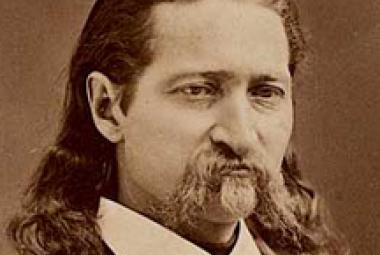The Beatles, nicknamed The Fab Four, were an English rock band that formed in Liverpool in 1960. With members John Lennon, Paul McCartney, George Harrison and Ringo Starr, they became widely regarded as the greatest and most influential act of the rock era. Rooted in skiffle, beat and 1950’s rock and roll, the Beatles later experimented with several genres, ranging from pop ballads and Indian music to psychedelic and hard rock, often incorporating classical elements in innovative ways. In the early 1960’s, their enormous popularity first emerged as “Beatlemania”; but as the group’s music grew in sophistication, led by primary songwriters Lennon and McCartney, they came to be perceived as an embodiment of the ideals shared by the era’s sociocultural revolutions. (More from Wikipedia)
The Beatles are well known for honing their craft in the clubs of Hamburg, Germany in the very early 1960’s, as well as in their hometown of Liverpool. Still, there was some question back then as to whether they could be successful selling records in a non–English-speaking country, so the Fab Four were cajoled by their manager Brian Epstein and their producer George Martin into recording German-language versions of two of their biggest hits, “I Want to Hold Your Hand” and “She Loves You” in January 1964. “Komm, Gib Mir Deine Hand” was later released on the band’s American album, Something New about six months later.
(April 2013)
Though only one of the big acts came from there, other 1960’s bands were based in Liverpool. Gerry and the Pacemakers is likely the best known; like the Fab Four, this band was managed by Brian Epstein, and their records were produced by George Martin. Their American hits include “Don’t Let the Sun Catch You Crying” and “Ferry Cross the Mersey”, a reference to the Mersey River that runs by the city – in case you are wondering why there has always been so much “Mersey” talk surrounding the Beatles.
* * *
After auditioning the Klubs at a nightclub called the Pink Flamingo, Vic Smith signed them to a management deal with Don Arden’s company Aquarius. As a result, in early 1968, the Klubs again sort of followed in the Beatles’ footsteps and arrived at Decca Records – actually, Decca had famously decided against signing the Fab Four – where four tracks were laid down according to company records. Two were covers of the Beatles’ “Drive My Car” and Jimi Hendrix’s “Fire” – the latter song (apparently recorded at a later time) is the only cover song on the Midnight Love Cycle CD – plus their own songs “Midnight Love Cycle” and “Ever Needed Someone”. “Midnight Love Cycle” also became the title of their retrospective albums.
(July 2013)
* * *
So you want to be a rock ’n’ roll star
Then listen now to what I say
Just get an electric guitar
And take some time and learn how to play
And when your hair’s combed right and your pants fit tight
It’s gonna be all right
So said the Byrds – specifically songwriters Jim McGuinn and Chris Hillman – back in 1967, and the formula still works pretty well to this day.
The lyrics are more than a little cynical – check the next to last line – and the fact is, no one has really discovered the secret formula. “So You Want to be a Rock ’n’ Roll Star” was written in the wake of the creation of The Monkees television show and the Monkees band, who became known by many as the Pre-Fab Four (the Beatles of course being the original Fab Four).
(April 2014)
* * *
Ringo Starr (real name: Richard Starkey, Jr.) was the final addition to the classic line-up when he was brought in as the band’s drummer, replacing Pete Best. He is the oldest of the Beatles (all of 23 when they hit the big time), having been born three months before John Lennon.















